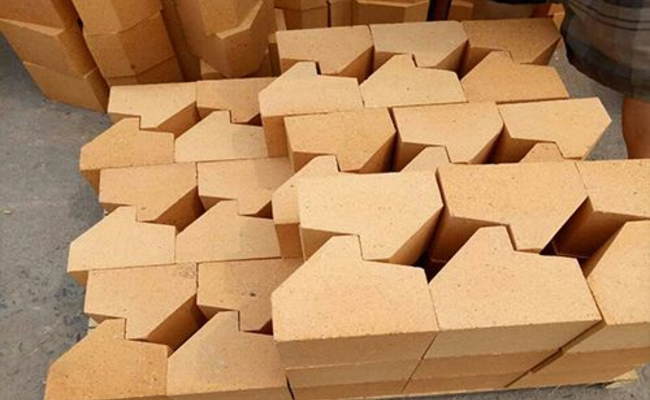
Ceramic pellets are spherical porous materials made of low melting point clay, shale, fly ash, or coal gangue as raw materials by calcination
The main purpose of insulating refractory materials made of heat-insulating refractory is to reduce heat dissipation in high-temperature furnaces, reduce the self-weight of the kiln, and reduce the exterior temperature of the kiln. Insulating refractories are crucial in the position of high-temperature kilns and are generally used in conjunction with heavy refractories to form a multi-layer composite structure that effectively improves the service life of the kiln, while also saving energy and protecting the environment.
Hollow spheres are made by melting raw materials such as alumina or zirconia into liquid form and blowing the high-temperature molten liquid into small droplets with compressed air, forming hollow spheres under the action of surface tension and centrifugal force. Common materials include alumina hollow spheres, zirconia hollow spheres, eccetera. These materials are widely used in refractory materials and can be used to produce hollow sphere bricks and insulation castables. Because of the high purity, low impurity content, molta forza, and low thermal conductivity of these material hollow balls, they are generally used in the production of high-grade insulation materials with good high-temperature performance and insulation performance, and can also be in direct contact with flame.
Drifting beads are hollow microbeads of fly ash that can float on the water surface, separated from the coal fly ash discharged from the burning pulverized coal furnace, mostly off-white. The chemical composition of drift beads fluctuates greatly, which is closely related to the composition of pulverized coal. The particle size is usually between 20~250μm, the specific surface area is 3000~3200cm2/g, and the bulk density is generally 250~400kg/m3. drifting beads are generally used in insulation castables, and the purpose of introducing them is mainly to improve the strength and reduce the thermal conductivity of insulation castables due to their larger cylinder pressure strength and lower thermal conductivity.
Diatomaceous earth is a kind of siliceous sedimentary rock with a biological origin. The size of the diatom shell is about 5-400μm, containing a large number of tiny pores, and the porosity reaches more than 80%, so it has excellent heat insulation performance. Bulk density is an important criterion to measure the quality of diatomaceous earth, the smaller the bulk density, the better the quality. Diatomaceous earth is commonly used in the production of diatomaceous earth tiles, which have good thermal insulation properties, but the use temperature cannot be higher than 900℃, Altrimenti, the silica in diatomaceous earth will be transformed into square quartz and lose its thermal insulation properties. Inoltre, diatomite is also used as a filler in irregular materials.
Perlite is acidic lava from volcanic eruptions, which expands at 1,180-1350℃, forming expanded perlite rich in closed and open pores, with an expansion multiple of 7-30 volte o più. Expanded perlite is small, generalmente, between 40-200kg/m3, thermal conductivity is very low, the safe use temperature is below 800 ℃, and has a certain degree of refractory properties. Dunque, expanded perlite is used in a large number of insulation refractory materials, the amount in the insulation castables is very large, mainly to reduce the thermal conductivity of insulation materials, while the block expanded perlite can provide a certain strength, widely used in the petrochemical industry kiln and pipe insulation. Inoltre, also use expanded perlite to make some stereotyped products.
Ceramic pellets are spherical porous materials made of low melting point clay, shale, fly ash, or coal gangue as raw materials by calcination. It has a smooth and hard surface, honeycomb shape inside, bassa conducibilità termica, e alta resistenza, it is a high-quality artificial lightweight raw material, mainly used as aggregate in thermal insulation and refractory castables.
Vermiculite is a typical layered silicate mineral composed of black mica, gold mica, and other minerals, and its chemical composition fluctuates widely, mainly depending on the composition of the mica. Vermiculite has the characteristic of heating and expanding, which makes it used in the field of refractory materials. Vermiculite starts to expand in volume when heated to 200°C, and the volume weight decreases to between 600 e 900 kg/m3, and the volume weight can be reduced to 100-130 kg/m after complete cauterization, and the thermal conductivity is also very small, possessing good thermal insulation properties. Vermiculite can be used at a maximum temperature of 1100°C, so it can be introduced in the form of granules or fine powder and made into vermiculite bricks or thermal insulation castables to be used in parts with slightly higher temperatures.
Da ottobre, i prezzi dell'allumina hanno continuato a salire, and China's largest bauxite importer - a…
Primo, Alto mattone di allumina: The Leader In High Temperature Refractories As a leader in high-temperature…
The application of refractory bricks in the kiln immediately endangers the operation rate of the…
Analysis Of The Causes Of Common Quality Problems In Tunnel Kiln Construction And Measures To…
Corundum quality refractory castables are made from corundum to the new jade refractory insulation material…
Analisi delle materie prime refrattarie in alluminio-silicio Prof. Li Yong of the University of Science and…